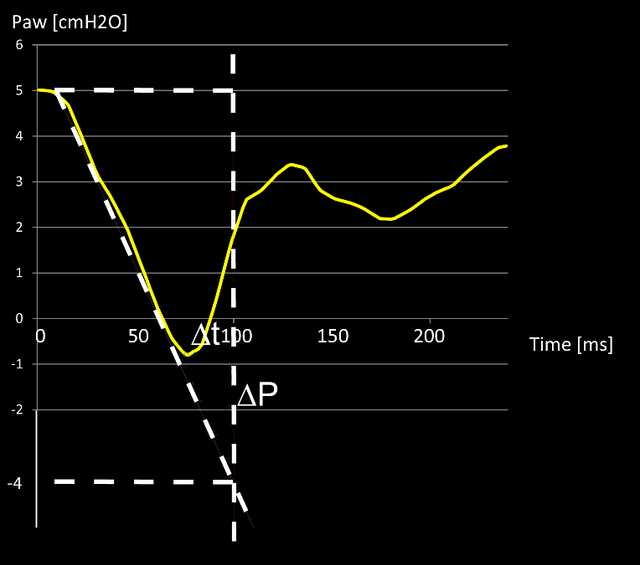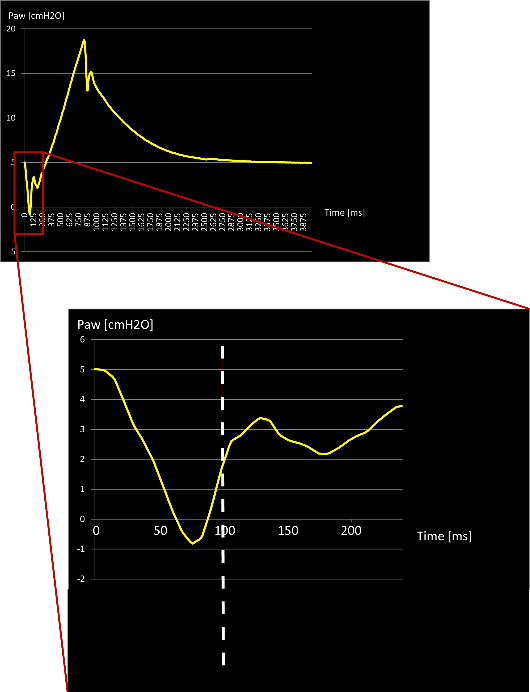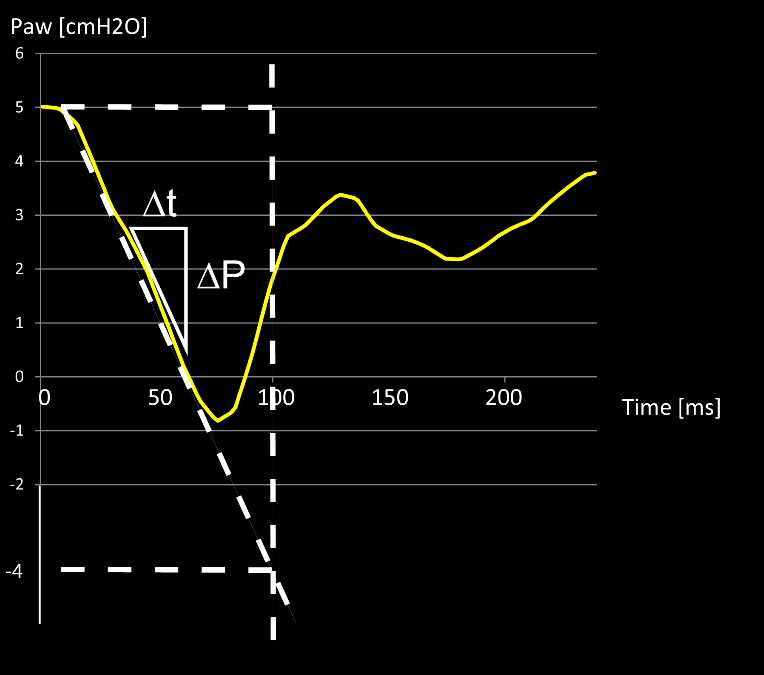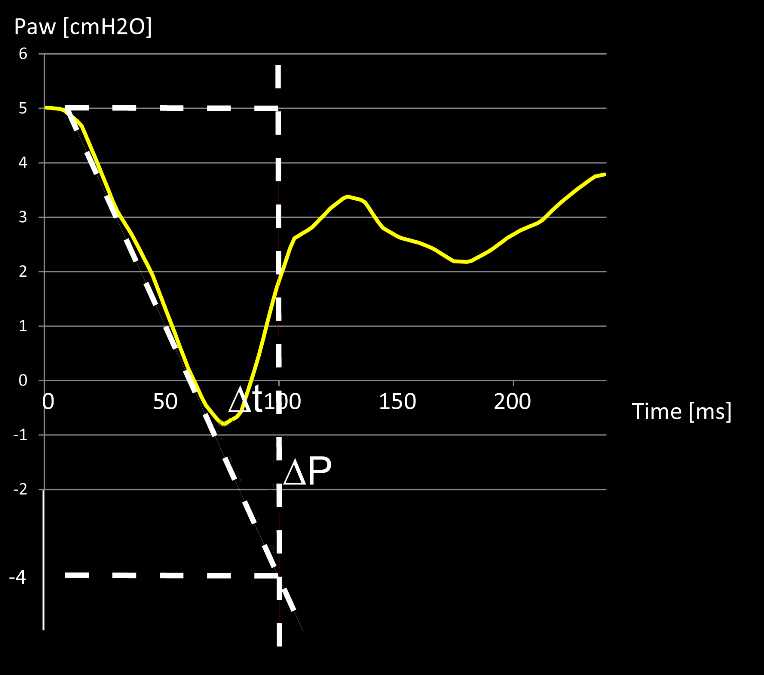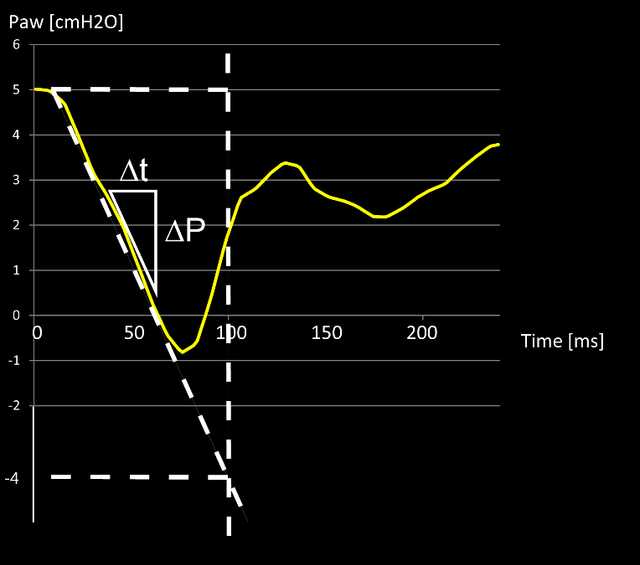
Autor: Clinical Experts Group, Hamilton Medical
Fecha: 04.09.2018

Drop in Paw during the first 100 ms of inspiratory effort
P0.1 corresponds to the drop in Paw, observed during the first 100 ms of an inspiratory effort made against the occluded airway opening (see Figure 1).
Current ICU ventilators maximize freedom for the patient. A fast response compensates pressure drops before 100 ms, especially when the inspiratory valves remain open to guarantee free breathing at any time (biphasic concept).
- No occlusion
- Pressure is compensated before the first 100 ms
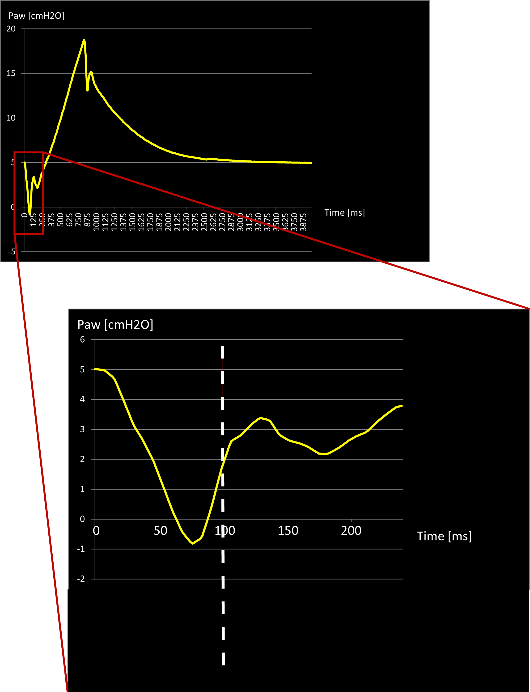
Monitoring P0.1 with no occlusion maneuver
How can P0.1 be monitored without an occlusion maneuver?
The ventilator calculates the steepest tangent of the drop in the pressure curve during an inspiratory effort.
This is shown in Figure 2 as a white triangle, and describes the minimum gradient of ∆t/∆P.
Once the minimum gradient is calculated, the value P0.1 is the extrapolation to 100 ms after pressure drops below PEEP.
Shown here in Figure 3 as a triangle with white dotted lines, P0.1 is the pressure drop below PEEP.
In this example:
P0.1 = Paw (100 ms) ‑ PEEP = ‑9 cmH2O
P0.1 is monitored breath‑by‑breath, regardless of whether flow‑ or pressure‑triggered (HAMILTON‑G5/S1 pressure trigger only).
Relevant devices: All
Full citations below: (

